9.2 /10 1 Votes9.2
Designer(s) Keiichi Yano | 4.6/5 Emuparadise Initial release date 21 June 2001 Developers Koei, iNiS | |||||||||||||||||||||||||||||||||
Modes Single-player video game, Multiplayer video game Similar iNiS games, Music video games, Other games | ||||||||||||||||||||||||||||||||||
Cgrundertow gitaroo man for playstation 2 video game review
Gitaroo Man (ギタルマン, Gitaru Man) is a rhythm video game developed by iNiS and published by Koei for PlayStation 2. The game features visual production by Mitsuru Nakamura and an original soundtrack by Japanese band COIL. The game was released in Japan on June 21, 2001, in North America on February 18, 2002 and in Europe on June 21, 2002. A port of the game for PlayStation Portable, titled Gitaroo Man Lives! (known as Gitaroo Man Live! (ギタルマンライブ!, Gitaru Man Raibu!) in Japan), was released in 2006.
Contents
- Cgrundertow gitaroo man for playstation 2 video game review
- Obscure gaming gitaroo man ps2 psp
- Story
- Gameplay
- Characters
- Soundtrack
- Reception
- Gitaroo Man Wan
- Gitaroo Man Lives
- Awards
- References
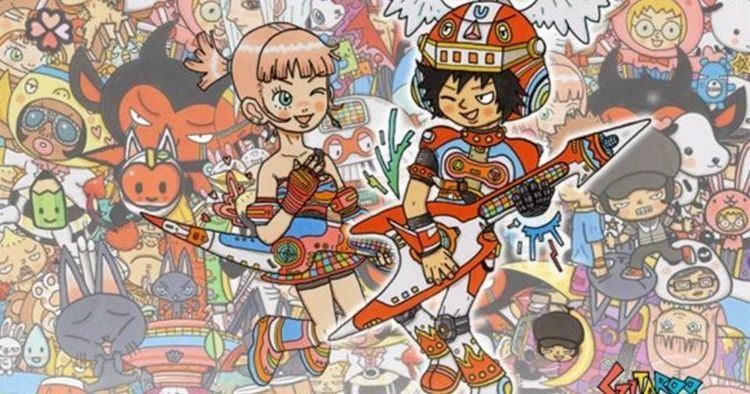
Obscure gaming gitaroo man ps2 psp
Story
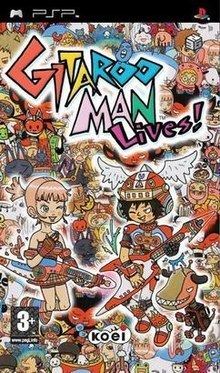
The player character is U-1, a young boy who is frequently ridiculed by classmates and passed over by Little Pico, the girl of his dreams. The story proper begins when Puma, a dog with the ability to speak, teaches U-1 to play the guitar, simultaneously teaching the controls of the game to the player, and subsequently revealing to him that he is the last legendary hero of Planet Gitaroo, and the possessor of the Last Gitaroo. When they are then attacked, Puma transforms into Puma AC-30 and gives U-1 the Gitaroo, transforming him into Gitaroo Man.
Gameplay
Gitaroo Man is a rhythm game in which the player character, U-1, faces against various opponents in musical battles. In each level, both the player and opponent has a life bar, with the player tasked with depleting the opponent's life bar and reaching the end of the song without running out of life. With some exceptions, each level consists of three main phases; Charge, Attack, and Guard, followed by the Harmony and End phases at the end of the level. During the Charge and Attack phases, players follow a "trace line" using the analogue stick, upon which red "phase bars" will appear. By pressing and holding down the button at the start of a phase, timing it to its appearance at the center of the screen, and releasing the button at the end, the player plays music. In the Charge phase, successful notes restore the player's health, whereas in the Attack phase, successful notes damage the opponents whilst missed notes will hurt the player. During the guard phase, players must hit corresponding buttons as they reach the center of the screen to avoid attacks from the opponent, taking damage should they miss. Unlike the player's life, which ends the game if depleted, the opponent's life bar indicates the progress of the player. Most levels are split up into different sections, which can have multiple variations on each playthrough, and the player must damage the opponent enough to move onto the next section. Otherwise, they will have to repeat the section until enough damage is dealt. At the end of a level, players play through the Harmony phase, which is similar to the Attack phase, and keep on playing til the End phase, at which point the player will no longer take damage. After each level, players are given a rank based on their performance, with good ranks earning items for the collection, which unlocks character bios.
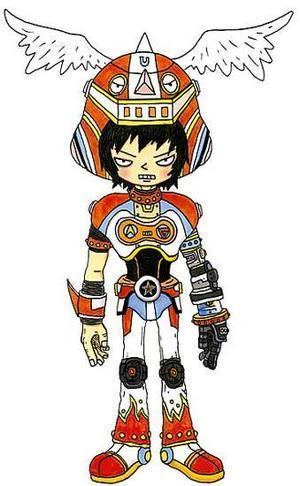
Masters' Mode is an additional mode unlocked after clearing the game once. In this mode, gameplay is harder as more complex notes appear, the "trace line" becomes more complex with more twists and turns and thus harder to follow and players take more damage from mistakes. Versus Mode is a game for up four players, where players battle against each other in two teams playing Gitaroo Man's parts and his opponent's parts respectively. Not all songs are available in the mode, and some songs are altered to provide better balance for both players compared to the single player mode. The PSP version additionally features Duet Mode, in which two players can play co-operatively via Ad-hoc in two exclusive new levels; "Metal Header" and "Toda Pasion".
Characters
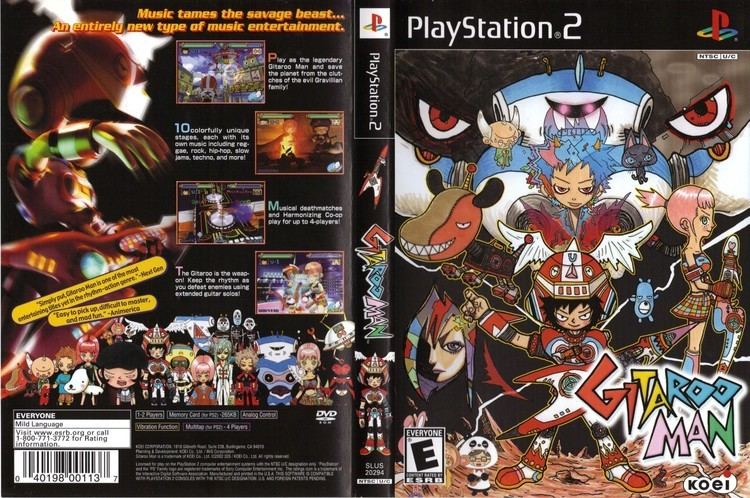
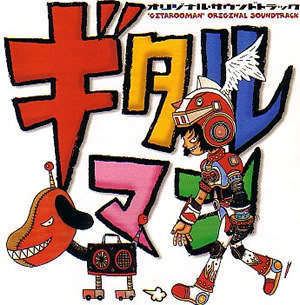
Soundtrack
The Gitaroo Man Original Soundtrack is an audio CD released in 2001, containing the majority of the songs found in the PS2 video game Gitaroo Man. While it is missing the background music played during the Collection viewing mode and the Master Mode versions of songs, it does have four Ropeland remixes of other songs.
Reception
Edge awarded the game a score of 7 out of 10; the game was later included in that magazine's staff- and reader-voted "Top 100 Games" list published in July 2007. Despite a number of positive reviews, the North American and European versions of Gitaroo Man were produced in very low quantities by Koei and, as a result, have become somewhat rare; it is regarded as a cult video game. Around November 2005 in North America, copies of Gitaroo Man began popping up in GameStop game stores. This was due to a reprint by GameQuestDirect, similar to their previous reprints of PlayStation RPGs Persona 2 and Rhapsody: A Musical Adventure, both of which were previously very rare. The game was also reissued in Europe around this time.
Gitaroo Man Wan
Gitaroo Man Wan (ギタルマン ワン) is a budget trial version of the game, released in Japan on April 5, 2001. Along with a demo of the game's second stage and exclusive cinematic scenes, the game also features an exclusive minigame in which players control Puma as he tries to eat donuts falling from the sky.
Gitaroo Man Lives!
Gitaroo Man Lives!, known in Japan as Gitaroo Man Live! (ギタルマン ライブ!, Gitaru Man Raibu!), is a port of the game released for the PlayStation Portable. Along with local Ad-Hoc multiplayer and additional difficulty options, the game adds a new Duet mode, in which two players control Gitaroo Man and Kirah in two exclusive new stages, "Metal Header" and "Toda Pasión". These levels may also be played alone if the handheld's Ad-Hoc is activated. The game was released in Japan on June 8, 2006, in Europe on September 29, 2006, and in North America on November 14, 2006.
